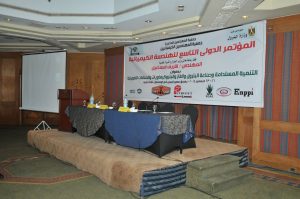Increasing octane number through minor modifications in an existing PENEX-DIH unit, A case study
- F. Nassar, A. Safwat, R. S. Ettouney, and M.A. El-Rifai
Chemical Engineering Department, Faculty of Engineering, Cairo University, Giza, Egypt

Abstract
The purpose of this study is to suggest some minor design modifications into an existing unit in a refinery with a view to maximizing the octane number of the gasoline product. The function of the studied UOP PENEX-DIH unit at MIDOR refinery is to process hydro-treated light Naphtha to improve the gasoline quality by converting low octane paraffins into higher octane iso-paraffins. The process involves two distillation columns; a stabilizer and a de-isohexanizer. HYSYS software was used to simulate the selected unit. The search for the conditions corresponding to maximum octane number of the product stream is done by considering the effect of changing five operating variables. These are the operating pressures of the stabilizer and the de-isohexanizer, their feed plate positions and the cut plate position of the side stream in the de-isohexanizer. These changes are associated with changes of the reflux ratio inside the de-isohexanizer. It was found that the octane number of the design case can be improved by moving the feed plate position 7 plates toward the bottom of the column and moving the cut plate position 8 plates toward the top of the de-isohexanizer. By comparing the different processes used to separate normal and iso-paraffins, the de-isohexanizer was found to match the purpose of the existing PENEX- DIH unit.
Increasing octane number through minor modifications in an existing PENEX
